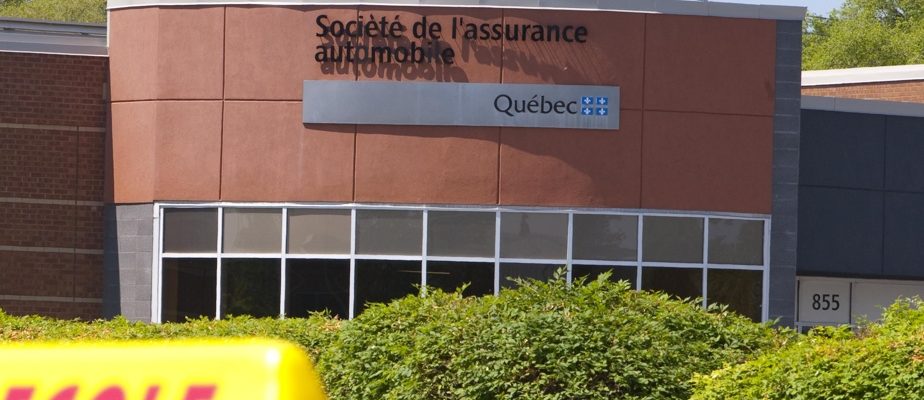American researchers have developed a new test that can predict the accident risk of young drivers in 15 minutes. This new approach could help reduce the number of injuries and deaths on the roads, with young drivers 2.5 times more likely to be involved in a collision.
“By identifying the drivers most at risk, we raise their awareness,” explains the lead author of the study published in October in the journal Pediatrics, Elizabeth Walshe, of Children’s Hospital of Philadelphia (CHOP). “We can also, in theory, intervene subsequently with these young people, for example offering them an update a few months after obtaining their driving license. I use the simulator with my teenage patients who have just obtained their license. Their parents, if they accompany them, can also play a role. »
The Société de l’assurance automobile du Québec (SAAQ) is interested in this technology. “The simulator test is part of the range of means that the Company uses to identify young drivers at greater risk of accidents and see how they react in an emergency situation,” responds Geneviève Côté, public relations officer at the SAAQ. . “The Company is interested in all approaches that can improve road safety. Our research teams monitor best practices. »
The study, conducted among 17,000 young people who had just passed their Ohio Department of Highway Safety (OTSO) driving test, consisted of a 15-minute driving simulation on a laptop computer.
The guinea pigs were divided into ten groups according to their degree of dangerousness while driving.
A year later, the group deemed the most dangerous had had 11% more accidents than the average and the safer group, 10% fewer. Variables assessed during the simulation included speed, acceleration, time to brake, distance maintained from other cars and ability to stay in lane. For comparison, in the study, guinea pigs under the age of 18 were 18% more likely to have had an accident in the year following obtaining their license compared to the entire group.
The rate of accidents with injuries and deaths has been decreasing for several years among Quebec drivers. But the SAAQ has not succeeded in reducing the additional risk posed by young drivers, despite the introduction of new measures. In 2018, Quebec introduced a curfew preventing driving at night for apprentices, who have not yet passed their practical exam, and a ban on having more than one young passenger at night, for those under 19 years old who passed their practical exam.
“Monitoring people at higher risk identified by a simulator seems entirely right to me,” says Jacques Bergeron, honorary professor in the psychology department at the University of Montreal. Mr. Bergeron has long worked on identifying, using simulators, the risks associated with the personality of young drivers as well as their motor and visual skills. “We could imagine additional training in the first months after obtaining the license. »
Success rate
Marc Thompson, director of the Association of Driving Schools of Quebec, has never heard of such an evaluation here.
What concerns us more is that the SAAQ has not published statistics on the success rate of students from different driving schools for several years.
Marc Thompson, director of the Association of Driving Schools of Quebec
According to SAAQ data, in 2019, 71% of candidates for the practical test passed it, compared to 74% in 2020 and 73% during the first six months of 2021. Some learner drivers sometimes have to repeat the practical test more than 20 times.
The DD Walshe continued to use the simulator for some time with young people who had passed their driving test with the Ohio Department of Highway Safety. “I know they continued even after my data collection ended after the study was over,” she says.
But since then, the OTSO has instead focused on imposing compulsory driving courses. “We are evaluating the results of the study” Pediatrics, says Judy Converse, OTSO publicist. “We used a previous CHOP study to improve access to driving lessons, including through scholarships for disadvantaged youth. »
The DD Walshe now uses his simulator with adolescent patients. “When they come with their parents to their medical appointments, I inform them that the risk of accidents can be predicted by this simulator. Parents are obviously more interested in the simulator than teenagers. »
Learn more
-
- 61%
- Proportion of young people aged 16-24 who held a driving license in Quebec in 1992
SOURCE: SAAQ
- 54%
- Proportion of young people aged 16-24 who held a driving license in Quebec in 2022
SOURCE: SAAQ
-
- 8%
- Proportion of young people aged 16-24 among driving license holders in Quebec in 2017-2021
SOURCE: SAAQ
- 19%
- Proportion of young people aged 16-24 among drivers involved in accidents causing injury or death in Quebec in 2017-2021
SOURCE: SAAQ
